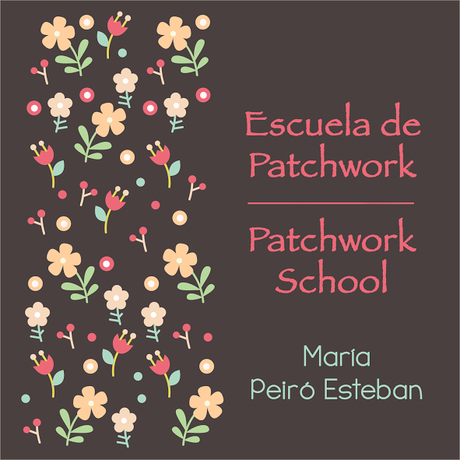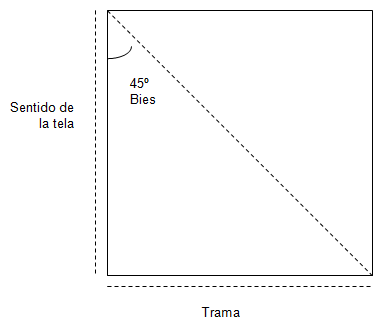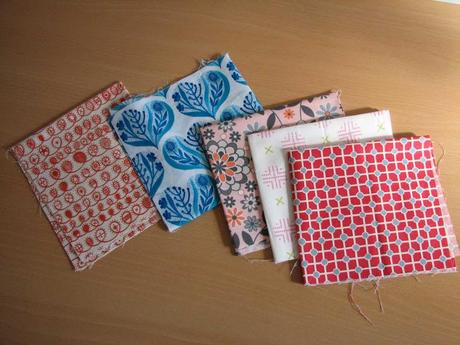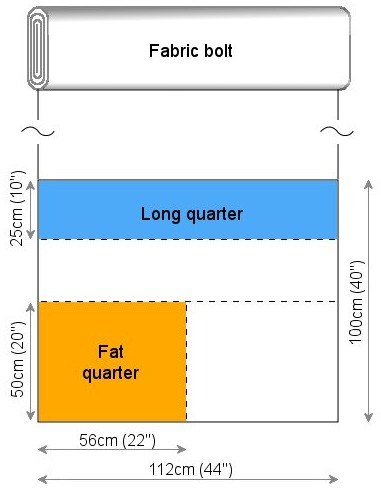Como sabréis, el patchwork surge de la necesidad: si no se puede comprar una manta hay que hacerla con los retales de casa. Eso supone que se utilizaba lo que había. Pero con el paso del tiempo se fue apreciando el valor artístico de las piezas y, en consecuencia, se empezaron a usar telas que preservaran la labor y realzaran su belleza.
As you surely know, patchwork comes from the need: if you can not afford a blanket you have to make it with fabric scraps you have at home. This means that it was used what one already had. But over the years, the artistic value of the pieces it is being appreciated. As a result, fabrics that should preserve the work and enhance its beauty began to be used.

Para elegir las telas hay que tener en cuenta varias cosas:
- Que todas las telas tengan la misma composición. Se suele usar algodón 100%, pero podemos elegir otro material.
- El tejido debe ser apretado, aunque no en exceso, de forma que no se pueda coser. Si es fino, hueco o está desgastado no durará mucho y puede salir la guata por él.
- Debemos dibujar un boceto con el diseño del quilt antes de comprar las telas para tener claro las cantidades y gamas de color que necesitamos.
To choose the fabrics it necessary to take into account several things:
- All fabrics should have the same composition. Cotton 100% is often used, but we can choose a different material.
- The weave has to be tight, but not too much, so it can not be sewn. If it is thin, hollow or worn it will not last long and the filling can get out through it.
- We must draw a sketch with the design of the quilt before buying the required fabrics. So we will have clear about the quantities and ranges of color we need.
 String star de 1910
String star de 1910
Las caras de la tela /Woven fabric
El sentido del hilo es el del ancho de la tela y la trama el vertical, el que corresponde a la longitud. Cualquier otro sentido de la tela se denomina bies. El bies perfecto es el que forma un ángulo de 45º con el ancho de la tela, en el que tenemos la máxima elasticidad del tejido. El ancho de la tela no es elástico, mientras que la trama lo es ligeramente.
The thread direction is the width of the fabric and the weft the vertical, which is the length. Any other direction of the fabric is called bias binding. The perfect bias binding is the one forming a 45° angle with the width of the fabric, when we will get the maximum elasticity of the fabric. The width of the fabric is not stretchable, meanwhile the weft is slightly elastic.
Todo esto es muy importante a la hora de cortar las piezas del quilt: siempre buscaremos la menor elasticidad para no deformar el diseño. En los cuadrados y rectángulos no hay problema: siempre los cortaremos en el sentido del hilo. Pero en piezas con más ángulos esta regla no sirve, así que nos fijaremos donde van colocadas las piezas en el quilt para evitar bies contra bies o bieses continuados.
All this is very important when cutting the pieces of the quilt: we wiil always look for the lower elasticity in order not to deform the design. There is no problem with the squares and rectangles: cut them always in the direction of the thread. But in pieces with more angles this rule does not work. So we will look where are the pieces placed on the quilt to prevent bias to bias or continuous bias.

Las telas de patchwork / Patchwork fabrics
Las telas que se venden específicamente para patchwork son 100% de algodón. Existen diversas calidades y características. Las telas americanas tienen un ancho de 112 cm., mientras que las españolas suelen ser de 150 cm. de ancho. Además, las primeras suelen ser más gruesas, tienen más apresto y están tratadas, de forma que no requieren tratamiento previo para usarlas.
Fabrics sold specifically for patchwork are 100% cotton. There are different qualities and characteristics. American fabrics have a width of 44’’ meanwhile the Spanish use to be 58.5’’. wide. In addition, the first usually are thicker, have more stiffening and are treated, so they do not require any treatment before using.

Preparar la tela / Pre-treatment
Como digo, la mayoría de las telas americanas, aunque conviene informarse de cada marca, no requieren tratamiento previo. Cuando es necesario, se trata de mojarlas para evitar que posteriormente encojan o destiñan. Se tienden sujetándolas por los orillos y conviene plancharlas.
As I said, the most of American fabrics do not require pre-treatment, although it is important to find out about each brand, When it is necessary, it is a question of soaking them to prevent them from shrinking or losing color. They should be hanged by the edges and ironed.

Piezas precortadas / Quarters
Cuando una alumna comienza en el taller de patchwork en The Crafty Room, siempre quedamos para hacer un recorrido por las tiendas de telas de la ciudad. Es la mejor forma de aprender sobre telas y, de paso, la variedad, calidad y precios que se ofertan. El caso es que no me gusta nada que a cualquier trozo de tela cortada se le denomine en España quarter o fat quarter.
When a student starts at the patchwork workshop in The Crafty Room, I always meet to do a walk-through of the city fabric shops. It is the best way to learn about fabrics and also, the variety, quality and prices offered. The thing is that I do not like the fact that in Spain any piece of cut fabric is called quarter or fat quarter.
Un quarter es un cuarto del ancho de la tela (americana), 28cm., por 23 cm. Un fat quarter es el doble, 56 cm. por 46 cm. En España se suele redondear: 28 cm. por 25 cm. y 55 cm. por 45 o 50 cm. (según la generosidad del vendedor). Y el long quarter es el ancho de la tela, 112 cm., por 25 cm.
A quarter is so called because it is a quarter of the width of the (American) fabric, 11’’ x 9’’. A fat quarter is twice a quarter, 22’’ x 18’’. And the long quarter is the width of the fabric, 44’ x 9’’.
 Vía Floppy Fabrics
Vía Floppy Fabrics

